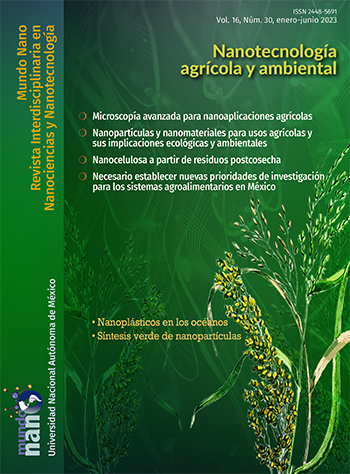Presentación
Contenido principal del artículo
Resumen
La nanotecnología agrícola y ambiental tiene cientos de aplicaciones para solucionar problemas que aquejan a la sociedad día con día. No obstante, los países de América Latina han participado relativamente poco en estos avances tecnológicos, al compararlos con sus contrapartes de América del Norte, Europa o Asia. Dado lo anterior, es importante destacar que países como México, Chile y Brasil tienen avances nanotecnológicos significativos y han logrado la formación de grupos de especialistas consolidados, a pesar de las limitaciones económicas y de acceso a equipo científico que aqueja a estas naciones.
En consecuencia y con base en las múltiples aplicaciones potenciales, algunas ya en comercialización, es necesario que el Estado, la industria y la comunidad científica fortalezcan e impulsen la innovación, el equipamiento y la formación de recursos humanos, así como una adecuada inversión en nanotecnología agrícola y ambiental. Asimismo, se deben considerar aspectos de normalización y regulación, tanto como estudios in silico e in vivo (en laboratorio, invernadero y campo) que valoren y evidencien los efectos nulos, secundarios o tóxicos de los nanomateriales sobre los organismos vivos y los ecosistemas.
Descargas
Detalles del artículo

Mundo Nano. Revista Interdisciplinaria en Nanociencias y Nanotecnología, editada por la Universidad Nacional Autónoma de México, se distribuye bajo una Licencia Creative Commons Atribución-NoComercial 4.0 Internacional.
Basada en una obra en http://www.mundonano.unam.mx.





